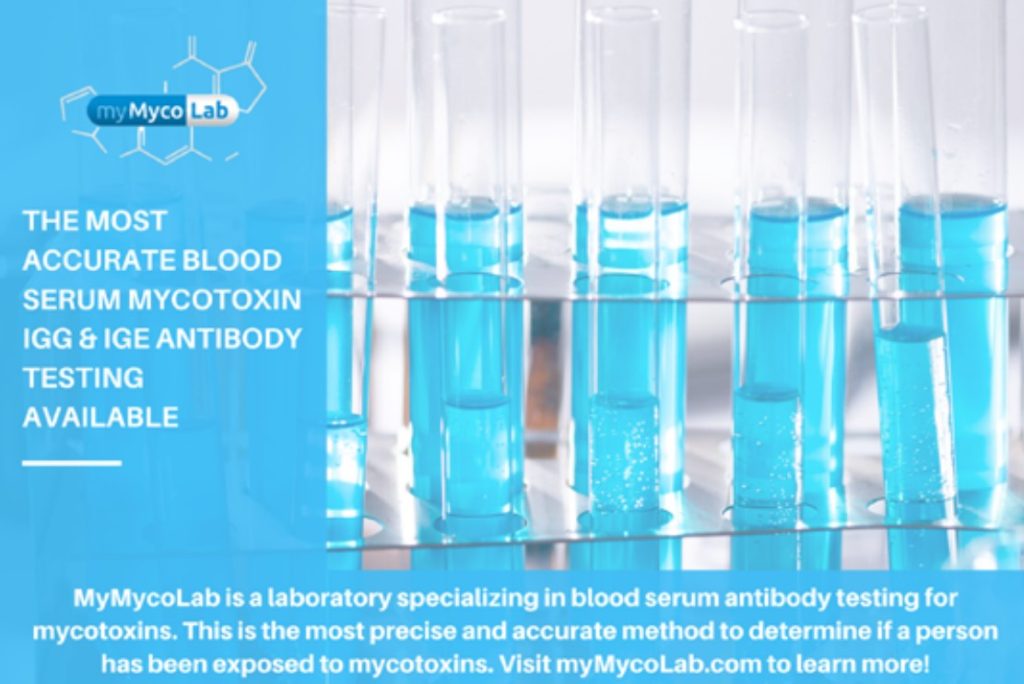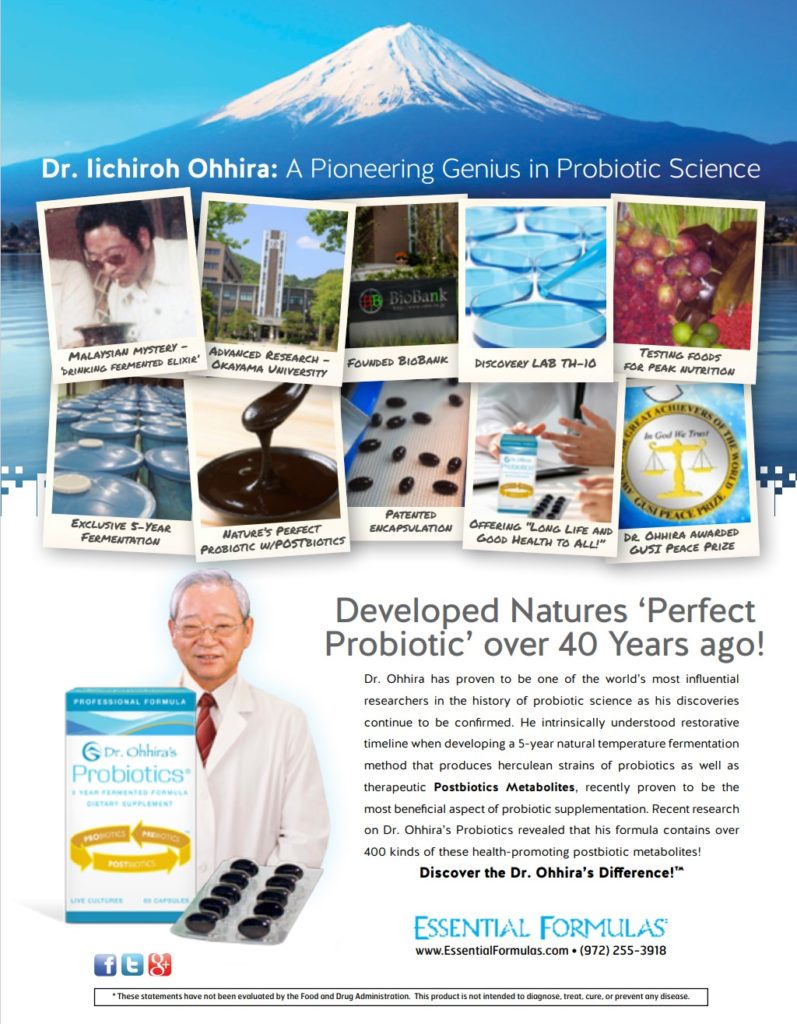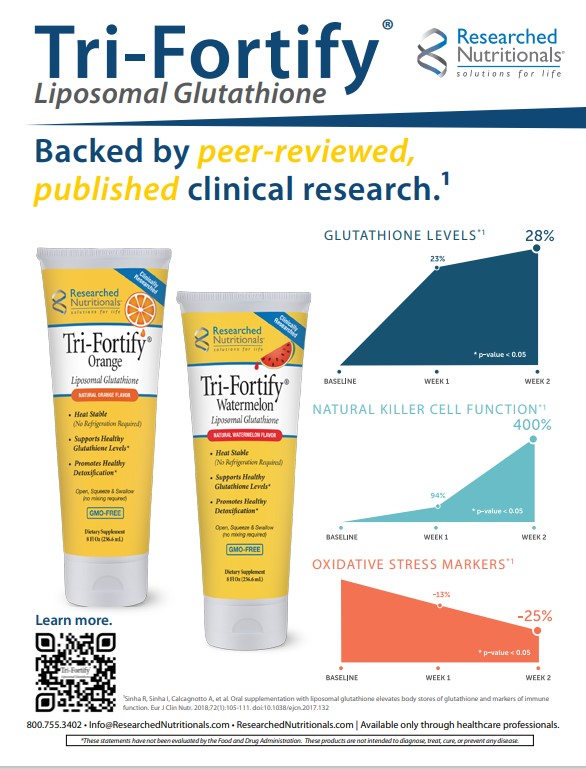By Julia Malkowski, ND, DC
Gone are the days of simply identifying a gut pathogen, prescribing an antibiotic and moving onto the next biological system. Although the identification and eradication of pathogens remains important, it is no longer sufficient. Recent advancements, most notably DNA technology and culturomics, allow us to identify the details of vast microbial communities held within our human biology. We have discovered that many seemingly disparate conditions ranging from anorexia nervosa, neurotransmitter imbalance, extroverted behavior, major depressive disorder, sleep physiology and aging have all been linked to the gut microbiome.1-6 Abundance and diversity are the foundation of the gut microbiome and intricately connected to various health outcomes. Diversity of species is an important component of health for any ecosystem, and the gastrointestinal (GI) microbiome is no exception. Even colic in infancy is associated with decreased gut microbial diversity.7 Chronic preventable lifestyle diseases, those categorized as potentially more difficult to treat, also have a link to microbiome abundance and diversity.8 As the father of medicine Hippocrates predicted, “all disease begins in the gut.”1 The key to understanding this sage adage may lie in testing and addressing gut microbial abundance and diversity.
To fully understand the human GI microbiome, we may begin with our past. The Hadza tribe of Tanzania are the closest living approximation to our ancestry as they have remained largely unchanged for thousands of years. They do not store any food yet subsist by hunting with hand-made bows and arrows and foraging for edible plants, especially tubers, akin to our modern-day potato.9 Today, proponents of paleo and carnivore diets would lead one to believe the hunter-gather diet consists primarily of meat. Contrary to pop culture belief, nearly all warm climate hunter-gather diets consist of a mixture of plants and meats, actually approximating 50/50.10 The fact remains that hunting is an endeavor ending in failure more often than not, hence the gathering of carbohydrates account for a sizeable portion of pre-agrarian diets. The most frequently consumed food of the Hadza, is also their least favorite, tubers.9 These tubers contribute to their notable daily fiber intake of approximately 100-150 g QD.10 In contrast the standard American diet contains approximately 15 grams of fiber QD, while the current Dietary Guidelines recommend approximately 30 grams QD.11 This is relevant as fiber, specifically soluble fiber, is linked to gut microbial abundance and diversity, which is in turn associated with a wide variety of health outcomes. Generally speaking for produce, one-third of the fiber will be soluble and two-thirds of the total is insoluble.
Regarding the microbiome, native tribes denote some distinct findings. A key difference to our modern guts is that native guts comprise many bacteria that aid specifically in the digestion of carbohydrates, such as Prevotella species.12 While Prevotella is found in modern humans, in excess populations this may be associated with dysbiosis. This complex finding underscores the unique nuances associated with the gut microbiome and host physiology. Findings may not be extrapolated across certain populations, and bacteria may exert different influences depending not only on environment, but neighboring bacteria as well. Second, native people across the globe display a significantly marked increase in gut microbial diversity compared to modern populations.9 This is germane, as not only is microbiome diversity associated with health outcomes, it has been progressively decreasing over time.
Humanity began with rich diverse microbiomes, yet the advent of agriculture, industrialization, and urban living have all been accompanied by a decrease in gut microbial diversity.12 This is pertinent as a rich diverse gut microbiome is the foundation for human health. Furthermore, immigration to a Westernized nation results in decreased gut microbial diversity and exacerbates with succession of each generation.13 This phenomenon is in turn associated with the development of cancer, diabetes mellitus, obesity, asthma, allergies, neurodevelopmental disorders, autoimmunity and inflammatory bowel conditions.13 Lifestyle, decreased gut microbial diversity, and the development of chronic disease seem to go hand in hand. To make matters worse, currently agreed upon healthy diets such as the Mediterranean diet do not foster gut microbiome diversity that equates to that of our ancestors.12 Modern guts display decreased diversity in the long run, yet we may approximate a “new normal” healthy gut as a metric. Regardless of lifestyle, a rich diverse and abundant gut is best equipped to perform its functions.
The GI microbiome is a highly complex, intricate network of a multitude of bacteria (as well as yeast, viruses, archaea and their respective DNA) that operate synergistically. The microbiome largely develops as a result of geography, method of delivery, environmental exposure, and nutritional diet. Factors such as host interindividual differences and quorum sensing, the ability of bacteria to communicate and even transfer genes play a role in the gut microbiome. Microbiome abundance and diversity consist of the numbers of bacterial species and their populations. While keystone bacteria, including but not limited to Lactobacillus spp., Bifidobacterium spp., Akkermansia muciniphila and Faecalibacterium prausnitzii, have proven valuable, they don’t represent the entire GI bacterial community.
Once exclusively discussed by a subset of specialists, names like Lactobacillus have become a common household item. Generally recognized bacteria include Bifidobacterium spp., especially in reference to the Firmicutes/Bacteroidetes balance. Of note, research in this area denotes mixed results and this ratio may not be as conclusive as once thought14—again highlighting the importance of abundance and diversity. Faecalibacterium prausnitzii and Akkermansia muciniphila have arisen as noteworthy bacterium in regards to human physiology. Although yet to join the common vernacular, F. prausnitzii is a keystone bacterium associated with butyrate production and its anti-inflammatory properties. Decreased levels of F. prausnitzii have beenassociated with GI inflammation, irritable bowel syndrome, inflammatory bowel disease, celiac disease, Parkinson’s disease, bipolar disorder and major depressive disorder.15 Low FODMAP diets have been shown to denote a deceased level of vital F. prausnitzii and subsequent fecal butyrate levels as well.15 Consider appropriate stool testing for individuals participating in a Low FODMAP diet.
Akkermansia muciniphila is amongst the most en vogue bacteria of the moment as it emerges as a keystone bacterium. This bacterium is being touted as self-help for its anti-anxiolytic properties, and in commercial probiotics, and even online weight loss forums. A. muciniphila means mucus loving and the implication here is its influence over mucosal barrier integrity. Importantly, compromised intestinal mucosal barrier integrity is the precursor to intestinal permeability. Therefore, Akkermansia plays an important role in the pathogenesis of intestinal permeability, autoimmunity, and is implicated in inflammation, metabolism, and immune processes.16 Recently the efficacy of cancer therapeutics has been shown to be influenced by GI microbial levels of A. muciniphila.17
In an effort to align host physiology and traditional monotherapy, the quest to identify a distinct bacterial species of greatest significance to human health has emerged. One serving of the typical probiotic on the market contains between 100 million and a few hundred billion bacteria of one or multiple strains.1 In theory this may improve microbiome abundance and diversity, yet keep in mind factors regarding living bacteria such as manufacturing, stability, transportation, and the extremely acidic GI tract. Once that hurdle has been addressed probiotics may be appropriate at times, yet this is not root cause medicine. From a functional medicine perspective, probiotics do not address the root cause and may be utilized as an acute intervention. Clinical decision making based on probiotic theories is also complex. Keep in mind that rarely have more than two clinical trials with the same probiotic strain and same diagnosis been performed.18 Diversity is paramount even when it comes to probiotic supplementation. More diverse guts have been shown to benefit from probiotic therapy via increased abundance and diversity, while less diverse guts have denoted a lack of significant changes to the microbiome.12 Those very individuals in need of probiotic therapies may not even receivebenefit if they have a less diverse microbiome to begin with. Lastly, the cost of probiotic therapies may not be financially feasible long-term. An approach to seed the colon with probiotics and feed these supplements with soluble fiber and polyphenols may prove efficacious.
In lieu of bacteria in a pill bottle, our ancestors likely inoculated their system by “washing” their hands in the entrails of hunted game as the Hadza do today.9 In effect, essentially bathing the hands in microbes that are almost certain to travel to their mouths and eventually land in the colon. As this idea hasn’t become a health craze yet, we may implore the next best logical solution; fermented foods, soluble fiber and polyphenols to support our gut microbiome. Fermented foods support a rich diverse and abundant gut microbial community. Fermented foods, such as yogurt, kimchi, kefir and kombucha, have proven to lead to increased gut microbial diversity.12
The next consideration is that these bacteria need proper energy sources to ensure optimal abundance. The preferred energy source of the bacterial residents of the GI microbiome is soluble fiber. Providing adequate dietary soluble fiber at 8-15 grams QD will typically support optimal populations. Polyphenols play a role as well. Akkermansia and Lactobacillus spp. consume polyphenols such as berries, green tea, chocolate, red wine, cranberries, pomegranate, curcumin, grapeseed, etc. An effective strategy to supportproper gut microbial populations is to consume or supplement with polyphenols in addition to soluble fiber daily. Recall, bacteria are able to communicate and encourage growth of one another. Supporting keystone bacteria, may in turn support other species as well. To effectively address the GI bacterial ecosystem, one must consider the bacteria as the unique organisms they are supporting their abundance and diversity.
Supporting healthy gut bacterial communities is an aspect of human health and individualized medicine. As health care providers we may evolve beyond a simplistic “test and treat” approach regarding the gut microbiome, to a “test and address” lexicon integrating the significant roles our gut bacteria play pertaining to health. Predominant topics of health and medicine intersect at the microbiome where abundance and diversity are paramount. Addressing microbial gut diversity and abundance alongside existing therapies may improve health outcomes. We already see this approach in action regarding chemotherapy and cancer therapeutics with promising results.17 Gut microbiome research is at the forefront of medicine and specific GI microbial applications may have a medicinal future, even as targeted cancer therapeutics.17

The best evidence supports a comprehensive evaluation of the gut microbiome as it relates to health outcomes. Current research suggests that optimal stool testing includes microbial abundance and diversity, as well as dysbiosis. GI360™ includes a summary for clinicians regarding abundance and diversity. Our research shows there is an inverse correlation between the Diversity Score and the Dysbiosis Index. The Diversity Score provides a wealth of information in a simple value. Research consistently demonstrates that microbiome abundance and diversity is of utmost consideration as it influences human health. GI360™ is unique in that it offers information regarding abundance and diversity, the Dysbiosis Index and Diversity Score, in addition to traditional stool marker. This is important as human physiology and countless health outcomes are rooted in the gut microbiome. We are at a time when chronic diseases are skyrocketing as gut microbiomes are dwindling. Recommending bacteria in a pill is not the best remedy. The evidence overwhelmingly points to a comprehensive “test and address” approach to the gut microbiome.
References
- Lyon L. ‘All disease begins in the gut’: was Hippocrates right?. Brain. 2018;141(3):e20. doi:10.1093/brain/awy017
- Seitz J, Trinh S, Herpertz-Dahlmann B. The microbiome and eating disorders. Psychiatr Clin North Am. 2019;42(1):93-103.
- Evans SJ, Bassis CM, Hein R, et al. The gut microbiome composition associates with bipolar disorder and illness severity. J Psychiatr Res. 2017;87:23-29.
- Gacias M, Gaspari S, Santos PMG, et al. Microbiota-driven transcriptional changes in prefrontal cortex override genetic differences in social behavior. Elife. 2016;5.
- Pedersen T. Gut Bacteria Impacts Toddlers’ Behavior, Particularly Boys. Published online August 8 2018
- Smith RP, Easson C, Lyle SM, et al. Gut microbiome diversity is associated with sleep physiology in humans. PLoS One. 2019;14(10):e0222394. Published 2019 Oct 7.
- Sonnenburg J, Sonnenburg E. The Good Gut: Taking Control of Your Weight, Your Mood, and Your Long Term Health. Bantam Press; 2015
- Hills RD Jr, Pontefract BA, Mishcon HR, Black CA, Sutton SC, Theberge CR. Gut Microbiome: Profound Implications for Diet and Disease. Nutrients. 2019;11(7):1613. Published 2019 Jul 16.
- Schnorr SL, Candela M, Rampelli S, et al. Gut microbiome of the Hadza hunter-gatherers. Nat Commun. 2014;5:3654. Published 2014 Apr 15.
- Pontzer H, Wood BM, Raichlen DA. Hunter-gatherers as models in public health. Obes Rev. 2018;19 Suppl 1:24-35.
- Available at How much (dietary) fiber should I eat? (usda.gov). Accessed on October 12, 2022.
- Sonnenburg JL, Sonnenburg ED. Vulnerability of the industrialized microbiota. Science. 2019;366(6464):eaaw9255.
- Vangay P, Johnson AJ, Ward TL, et al. US immigration westernizes the human gut microbiome. Cell. 2018;175(4):962-972.e10.
- Magne F, Gotteland M, Gauthier L, et al. The Firmicutes/Bacteroidetes Ratio: A Relevant Marker of Gut Dysbiosis in Obese Patients?. Nutrients. 2020;12(5):1474. Published 2020 May 19.
- GI360 Resource Guide. Available at https://www.gi360.com/resource-guide. Accessed September 20, 2022.
- Hasani A, Ebrahimzadeh S, Hemmati F, Khabbaz A, Hasani A, Gholizadeh P. The role of Akkermansia muciniphila in obesity, diabetes and atherosclerosis. J Med Microbiol. 2021;70(10).
- Derosa L, Routy B, Thomas AM, et al. Intestinal Akkermansia muciniphila predicts clinical response to PD-1 blockade in patients with advanced non-small-cell lung cancer. Nat Med. 2022;28(2):315-324.
- Brüssow H. Probiotics and prebiotics in clinical tests: an update. F1000Res. 2019;8:1157.










